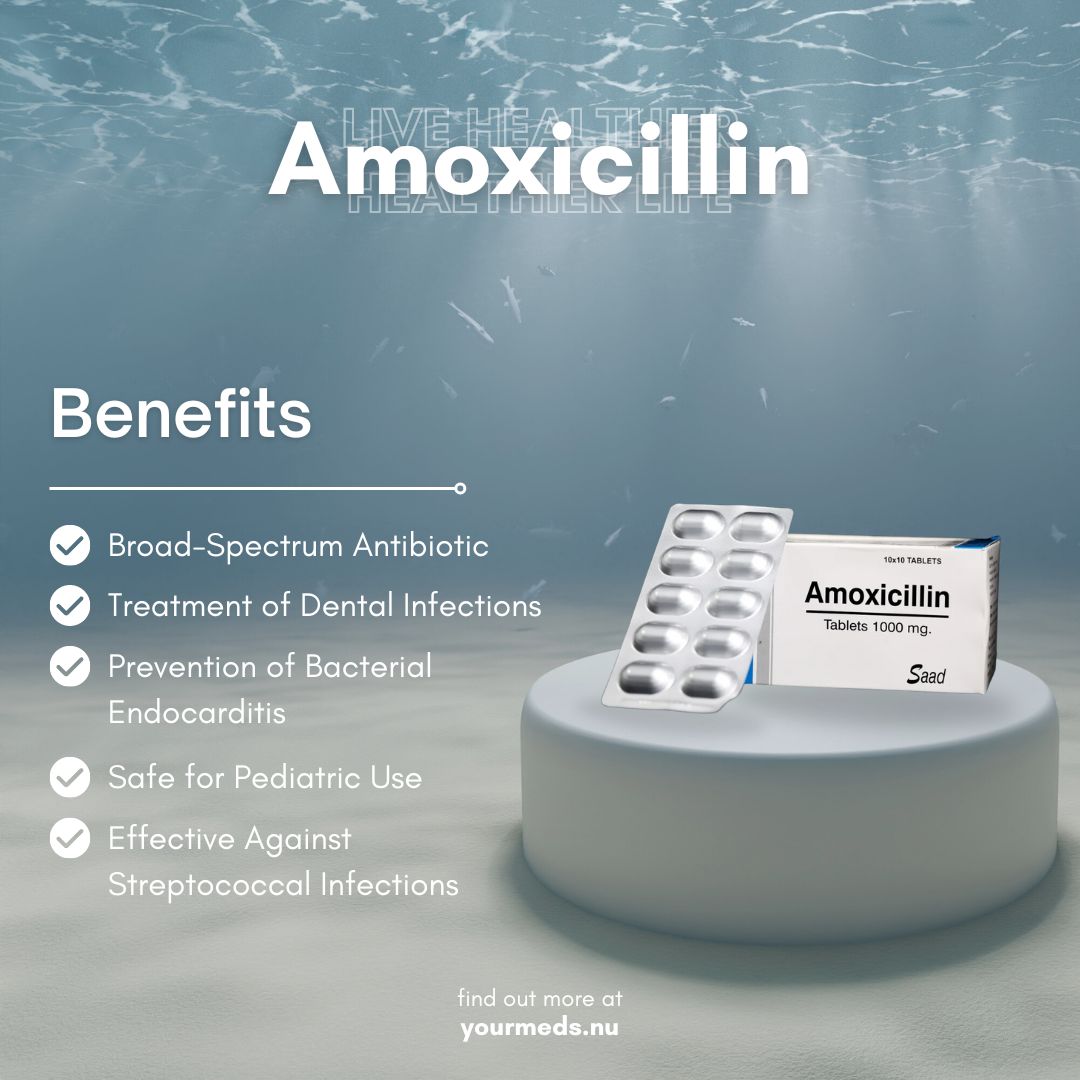
14 Sep Everything You Need to Know About Amoxicillin
Amoxicillin 1000mg Pills – 6 Count Pack | Broad-Spectrum Antibiotic
What Is Amoxicillin?
Amoxicillin is an antibiotic used to treat infections caused by bacteria. It’s part of the penicillin family and works by killing bacteria or stopping them from growing. Doctors often prescribe it for a variety of common infections, making it one of the most widely used antibiotics.
What Does Amoxicillin 1000mg Treat?
Amoxicillin is a broad-spectrum antibiotic that treats various bacterial infections. The 1000mg pills are typically prescribed for more serious or stubborn infections. Here are the most common ones:
– Chest infections: Like pneumonia or bronchitis.
– Throat infections: Such as tonsillitis and pharyngitis.
– Ear infections: Often prescribed for children, but adults too.
– Urinary tract infections (UTIs).
– Skin infections: Like cellulitis or infected wounds.
– Dental infections.
– Certain sexually transmitted infections (STIs).
Dosage and How to Take It
Amoxicillin 1000mg pills are usually taken once or twice a day, depending on your doctor’s instructions. For example, a 6-count pack could be prescribed for a 3-day treatment, where you take 1 pill every 12 hours.
– With or without food: You can take it with or without food. However, if it bothers your stomach, having it with a meal may help.
– Finish the full course: It’s essential to complete the entire course, even if you feel better. Stopping early can lead to the infection returning and bacteria becoming resistant to antibiotics.
When Should You NOT Take Amoxicillin?
There are certain situations where you should not take Amoxicillin. These include:
- Allergic Reactions: If you’ve had an allergic reaction to penicillin, Amoxicillin, or other beta-lactam antibiotics, you should not take this medicine. Symptoms of an allergic reaction include:
– Rash or hives
– Swelling of the face, throat, or tongue
– Difficulty breathing (this is a medical emergency)2. Mononucleosis (Mono): If you have mono, taking Amoxicillin can cause a widespread rash that isn’t due to an allergy. Always inform your doctor if you’ve recently been diagnosed with mono.
3. Severe Kidney Problems: If you have kidney issues, your doctor may lower your dose or suggest a different antibiotic. Amoxicillin is cleared from the body through the kidneys, so if your kidneys don’t work well, the drug can build up in your system and cause problems.
4. History of Antibiotic-Associated Diarrhea: If you’ve had serious diarrhea (Clostridium difficile infection) after taking antibiotics in the past, you should avoid Amoxicillin unless advised by a doctor.
Side Effects You Should Know About
Like most medications, Amoxicillin can cause side effects, although many people tolerate it well. Here are some common and serious side effects to be aware of:
– Common side effects:
– Upset stomach
– Diarrhea
– Mild skin rash
– Headaches
– Serious side effects (rare but important to watch for):
– Severe allergic reactions like swelling, itching, or difficulty breathing.
– Persistent diarrhea, which could be a sign of a severe gut infection (Clostridium difficile).
– Unusual bruising or bleeding.
Why You Should Take Probiotics and Enzymes with Antibiotics
Antibiotics like Amoxicillin don’t just kill bad bacteria—they can also disrupt the good bacteria in your gut. This can lead to stomach issues, diarrhea, and sometimes yeast infections.
To keep your gut healthy while taking antibiotics, it’s a good idea to use probiotics and digestive enzymes:
– Probiotics: These are “good” bacteria found in yogurt or supplements. They help restore balance to your gut and reduce side effects like diarrhea.
– Digestive enzymes: These help your body break down food, which can relieve any digestive discomfort.
Taking probiotics and enzymes with antibiotics can help maintain your gut health. Just make sure to take them at least a few hours apart from the Amoxicillin dose.
Important Considerations
– Birth control: Amoxicillin can lower the effectiveness of birth control pills. Use a backup form of contraception, like condoms, while you’re taking the antibiotic.
– Alcohol: While alcohol won’t interact directly with Amoxicillin, it’s best to avoid it while you’re sick, as it may slow down your recovery or worsen side effects like nausea or dizziness.
– Allergies: Always let your doctor know about any allergies you have, especially to antibiotics.
Preventing Antibiotic Resistance
It’s crucial to use antibiotics like Amoxicillin responsibly to avoid bacteria becoming resistant. Here’s how you can help:
– Only take antibiotics when prescribed for bacterial infections.
– Finish the entire course, even if you feel better before it’s done.
– Don’t share your antibiotics with others or save leftover pills for another infection.
Storage
Store Amoxicillin in its original packaging, in a cool, dry place, and out of reach of children. Make sure it’s not exposed to direct sunlight or moisture.
Conclusion
Amoxicillin 1000mg is an effective treatment for a range of bacterial infections, but it should be used properly. Don’t take it if you’re allergic to penicillin or have certain medical conditions like mono or severe kidney issues. Remember to complete the entire course, and consider taking probiotics and digestive enzymes to keep your gut healthy. If you have any concerns or experience serious side effects, talk to your doctor or pharmacist right away!





No Comments